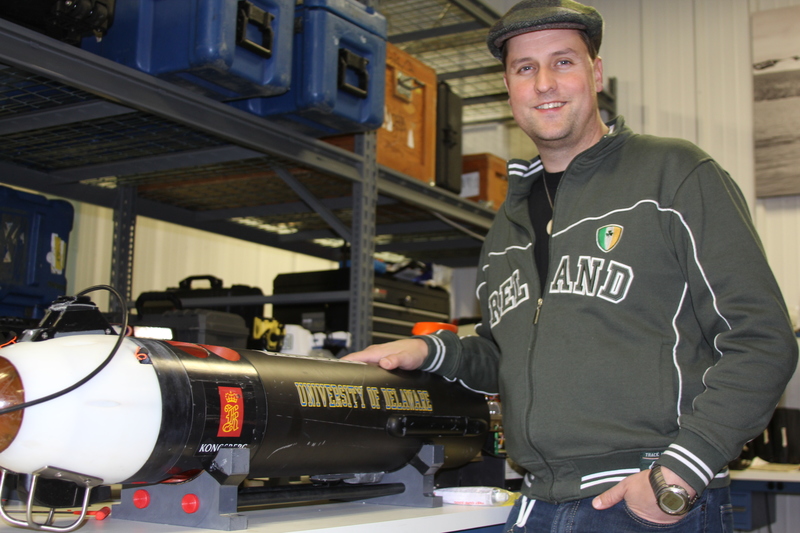Late last year, a group of University of Delaware graduate students traveled nine hours on a boat to research U.S. Naval Academy waters.
Students in the UD robotics program left Lewes on the research vessel Joanne Daiber, cruising north along the Delaware River, through the C&D canal to the Chesapeake Bay. There they turned south to the Severn River, a tributary of the Chesapeake Bay near Annapolis.
The University of Delaware robotics program caught the eye of the U.S. Naval Academy in Annapolis, which asked the students to map the bottom of the Severn River.
“They're the best maps that have been generated for the Severn River,” said Art Trembanis, professor of robotics at the University of Delaware, who conducted the trip.
Sonar technology and a live camera feed gave students a clear picture of the river bottom. Trembanis said the high-resolution maps pointed out deposits of sand, mud and gravel. The new map of the river floor establishes a baseline, he said, for comparison with future maps to analyze whether sediment has shifted.
A week after the UD students mapped the river floor, Trembanis said, the Naval Academy used the image to gather samples, checking the composition of the samples and looking for pollution.
The autonomous underwater vehicle used in the Severn River research is one of about 13 owned by the University of Delaware. All are designed to glide through the water.
“Each is slightly different, with different capabilities,” Trembanis said.
The underwater vehicles are meant to replace a human being when research falls into one of four categories. Trembanis dubbed the 4Ds: a site too dirty, dangerous, daring or dull for human involvement.
Cold Arctic seas, oil spills and storm zones are sites where robotic devices are used, he said.
“You can send robots where you don't want to send people,” he said.
Trembanis is now teaching a course on environmental field robotics and will use the underwater robots to test Delaware waters. He said would like to continue a partnership with the academy, and he intends to invite Naval Academy students to the Lewes campus when they begin hand-on experiments.
“We're agregating and bringing together all these autonomous systems for the purpose of gathering geological and environmental information,” he said.
Melissa Steele is a staff writer covering the state Legislature, government and police. Her newspaper career spans more than 30 years and includes working for the Delaware State News, Burlington County Times, The News Journal, Dover Post and Milford Beacon before coming to the Cape Gazette in 2012. Her work has received numerous awards, most notably a Pulitzer Prize-adjudicated investigative piece, and a runner-up for the MDDC James S. Keat Freedom of Information Award.



















































